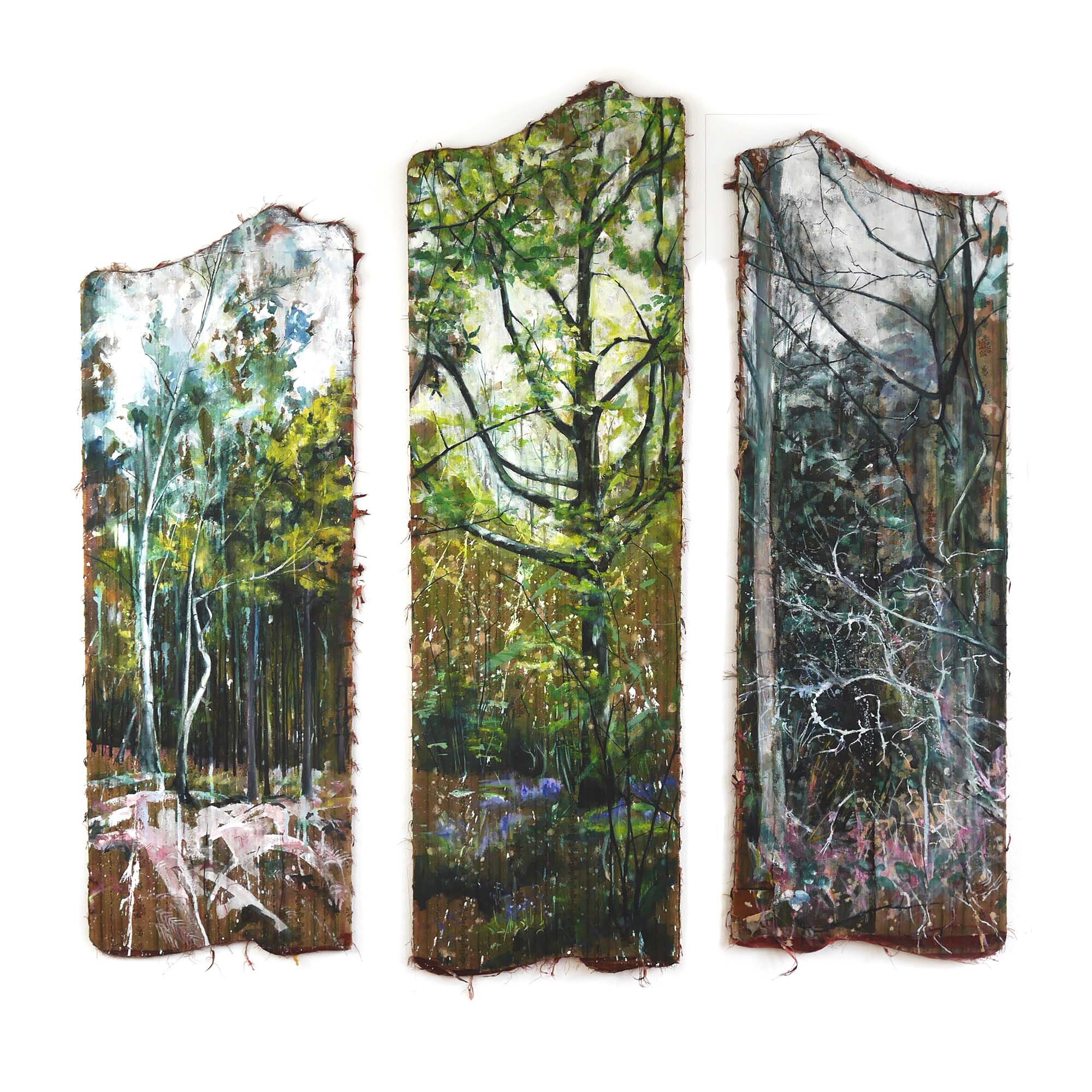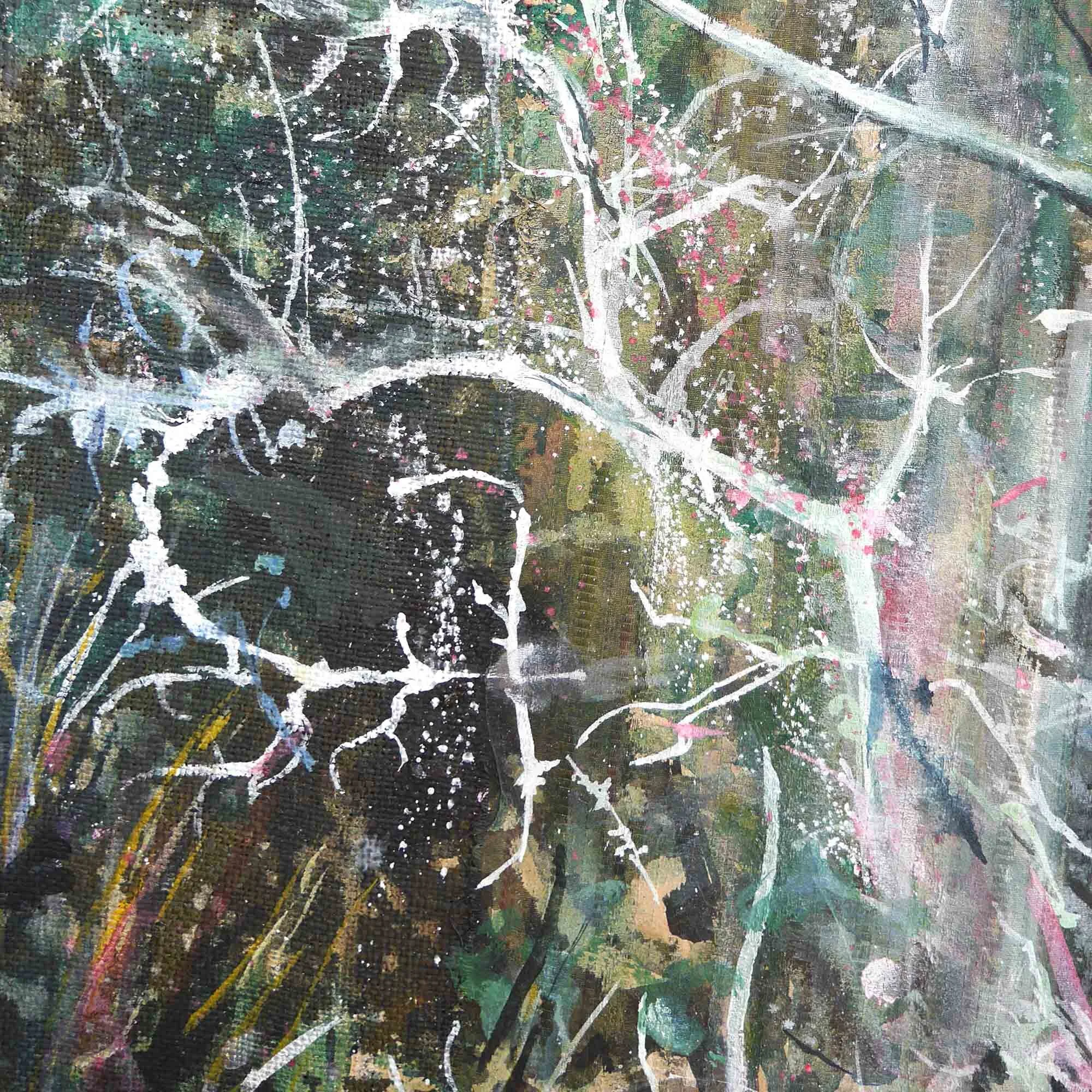Trinity Screens
This triptych is painted on the inside of an antique dressing screen that has been passed down to Sarah from her mother-in-law who was given the screen from her grandmother. Each generation had reupholstered the middle sections of the screen layering the fabric chronologically. Stripping and ripping back the fabric to remove these panels from the frame was like an archaeological process. Fragments of red silk fabric from the 1920s clinging to the sides to reveal the late Victorian fabric underneath. These objects are steeped in personal and social history particularly of the domestic space and they had a function in the home. This contrasts with the subject matter as these depict wild areas of woodland outside the home. What is also fascinating is the pattern on the fabric is of repeated and ordered flowers. The paintings reflect upon the uncanny disposition of both the actual fabric and the actual object of the painting and the painted place or the memory/ recording of the place. They are rooted in the lived experience of these woods, places and changing seasons. While the triptych references the woodland photographs, the gestural paint marks and sections of fabric slip into abstraction.
The title of this piece is using the Hindu definition of Trinity which comprises of Brahma, Vishnu and Shiva. These represent the cyclical nature of birth, preservation, destruction and regeneration. The work also alludes to the artist fascination with Christian alter pieces, particularly The Modena Triptych, 1568 by El Greco. These paintings are a compelling and striking portrayal of life and death. The artist was drawn to the use of landscape in these artworks and how this can show the cyclical nature of all human existence.








